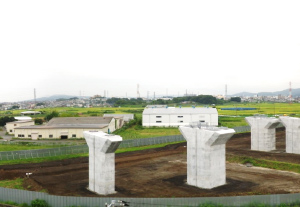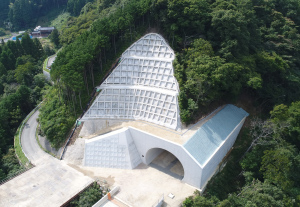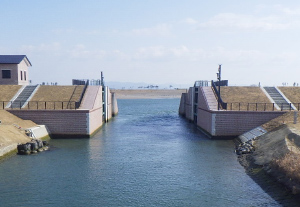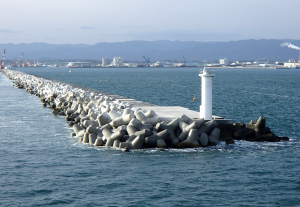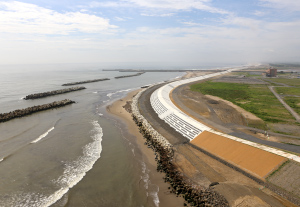- Project Stories
- Water Supply and Drainage
Building an Underground Tunnel to Protect Town from Flooding
Constructing water storage facility in Higashi Kushihara, Kurume, Fukuoka Prefecture

Project Responsibility
Construction Department, Civil Engineering Business Division
Joined 1997
Takeshi Katsushima
“This tunnel digging work utilized a totally different method from my previous experience of mountain tunnels. Much was not what I had imagined, and it reaffirmed the importance of actually seeing and working firsthand. As the location was an urban environment, we were considerate of the surroundings and were able to complete the project without incident.”
Building a Rainwater Storage Location under a Major Road in an Urban Area, for Heavy Rainfall Events
Higashi Kushihara in Kurume City is the location of Kurume Police Station, Kurume Regional Fire Station and Kurume University Hospital, but torrential rainfall often causes homes to be flooded and puts streets underwater, hampering the safety and security of local people. To prevent flood damage a 4m diameter tunnel, 901m long, was built using boring shield equipment, for the temporary underground storage of water at times of heavy rain.
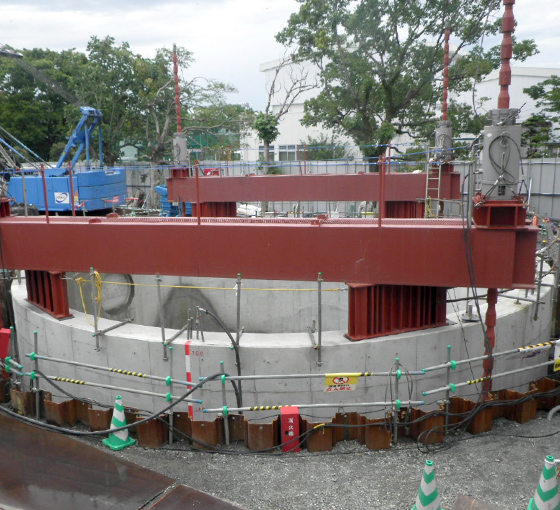
- SCENE
- 01
Installing Shaft by the Open Caisson Method
The shaft was to be used afterwards as a manhole, so the open caisson method was used, with a reinforced concrete cylinder 12m in diameter forced down hydraulically from the ground surface. The work required digging out and removing wet mud from the site, and there were fears that the wet mud would splash onto adjacent tennis courts, and so a 2m net was installed on top of a temporary 3m fence to prevent this.
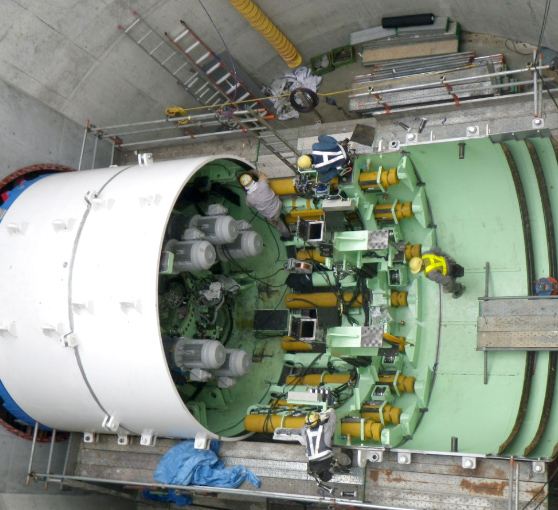
- SCENE
- 02
Disassembled Transportation and Reassembly of Tunneling Shield
The tunneling shield used for boring underground was cylindrical in shape, with an outer diameter of 4,530mm. It was 7,300mm long and 140ton in weight. As it could not be transported fully assembled, it was moved to the site in separate parts, consisting largely of the cutter head that digs out the tunnel, the drive assembly that moves the cutter head, a screw conveyor that shifts the displaced soil, a shield jack needed for forward progress and the front and rear that form the outer shell of the machine. These parts were lowered in turn down the vertical shaft using a 160ton rough terrain crane and were then assembled.
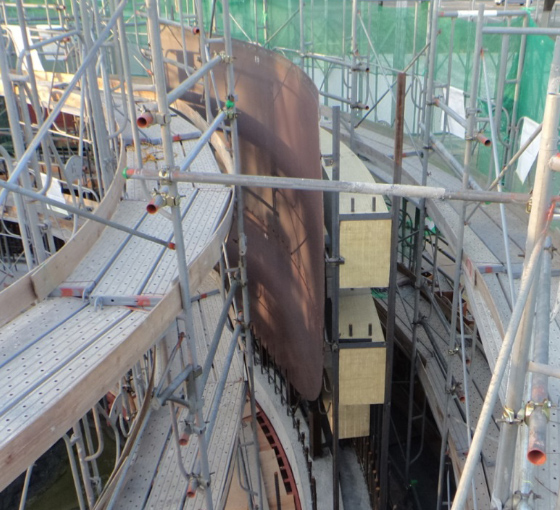
- SCENE
- 03
Preventing Working Face Collapse as Tunneling Starts
When implementing the shield tunneling method, breaking wall as shield tunneling is launched is one of the most risky processes. Usually, the ground in which the machine is set to move is improved over a large area, as a method to prevent collapse of the working face (mud slurry) when breaking wall. But in this case the SEW method was employed, embedding FFU (rigid urethane resin + glass fiber) material that the machine cuts through into the side wall. By using the SEW method face collapse was prevented and also the scale of ground improvement could be reduced, thus shortening the work schedule.
Breaking wall is the preparatory task of creating an aperture in the side wall of the shaft for the tunneling shield to start operation.
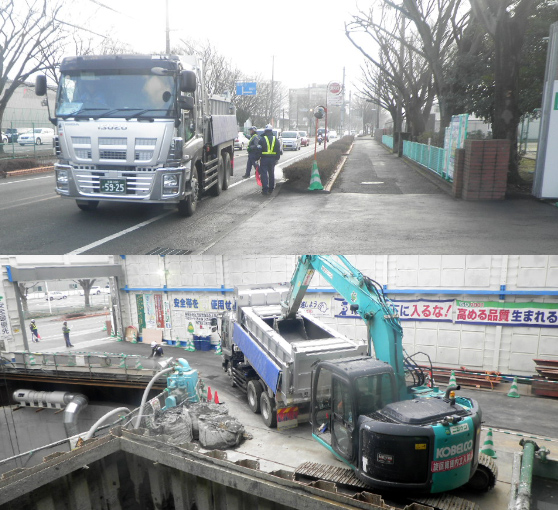
- SCENE
- 04
Moving Materials On and Off Site with Consideration for Local Traffic
The starting point for the tunneling shield was set up in one corner of a city park. The road facing it carried heavy traffic and care was needed controlling works vehicles because of access restrictions to the road from the site.
The vehicles accessing the site consisted of three large trailers for carrying reinforced concrete segments, one 10ton lorry to transport cement, 50 10ton dump trucks for removing the displaced soil as well as many other vehicles carrying goods and materials. A nearby location was reserved as a waiting zone so that these vehicles did not obstruct other traffic, and a contact system was set up. To keep displaced soil from spilling during transit, enclosed dump trucks were used. As a result, the work was completed without accident or any complaint.
GALLERY
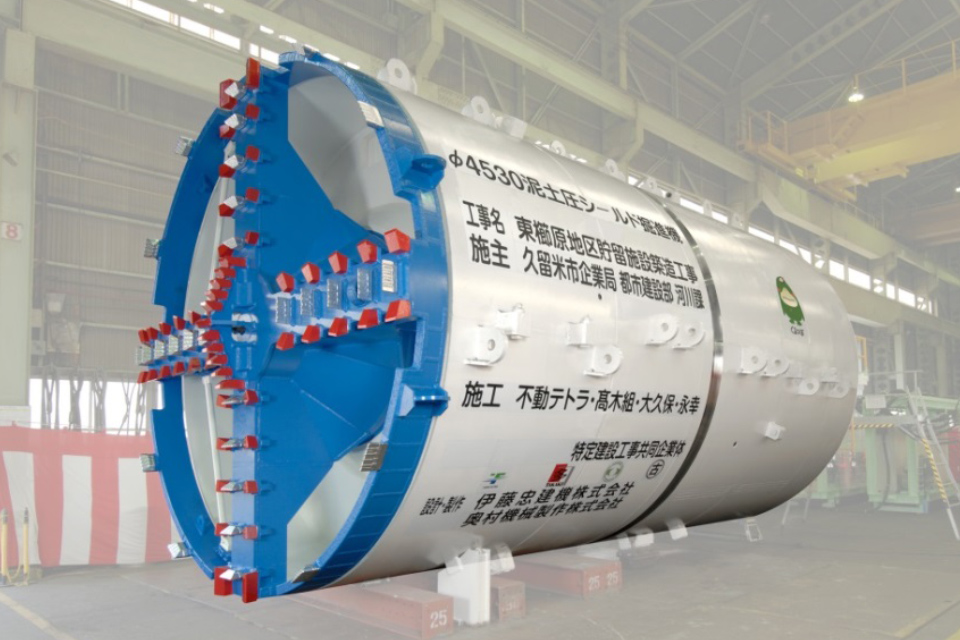
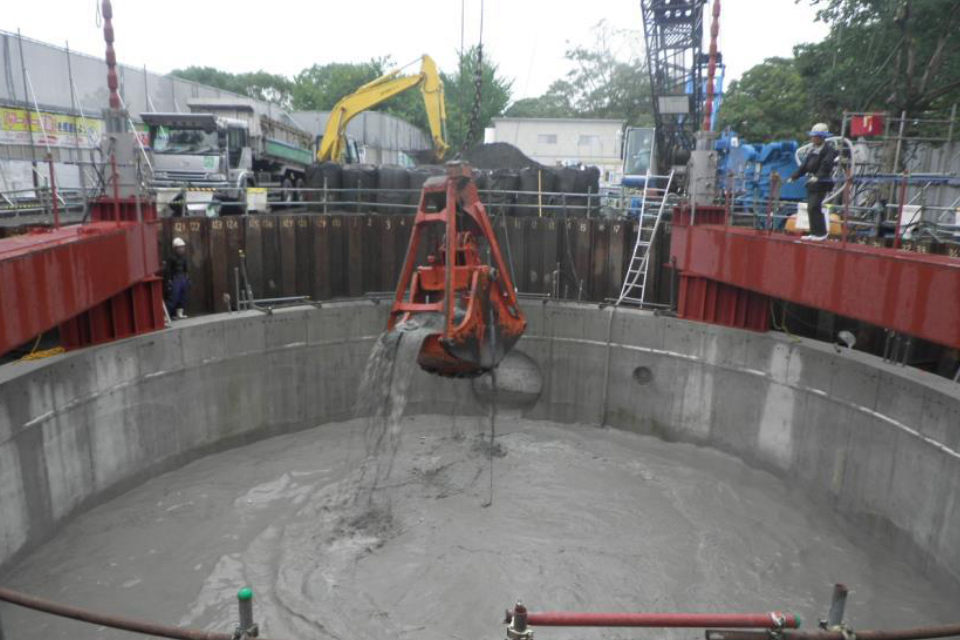
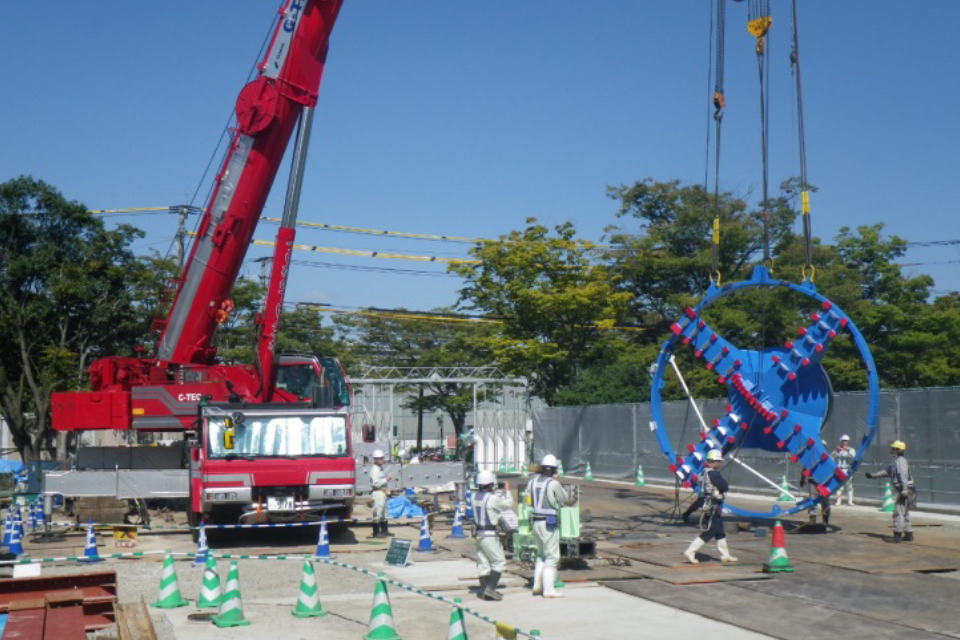
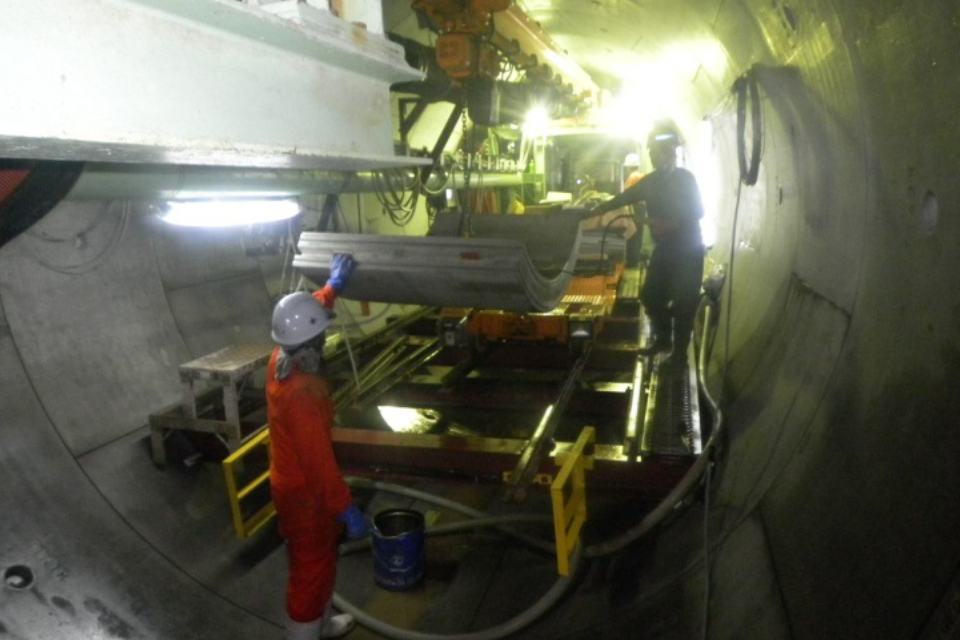
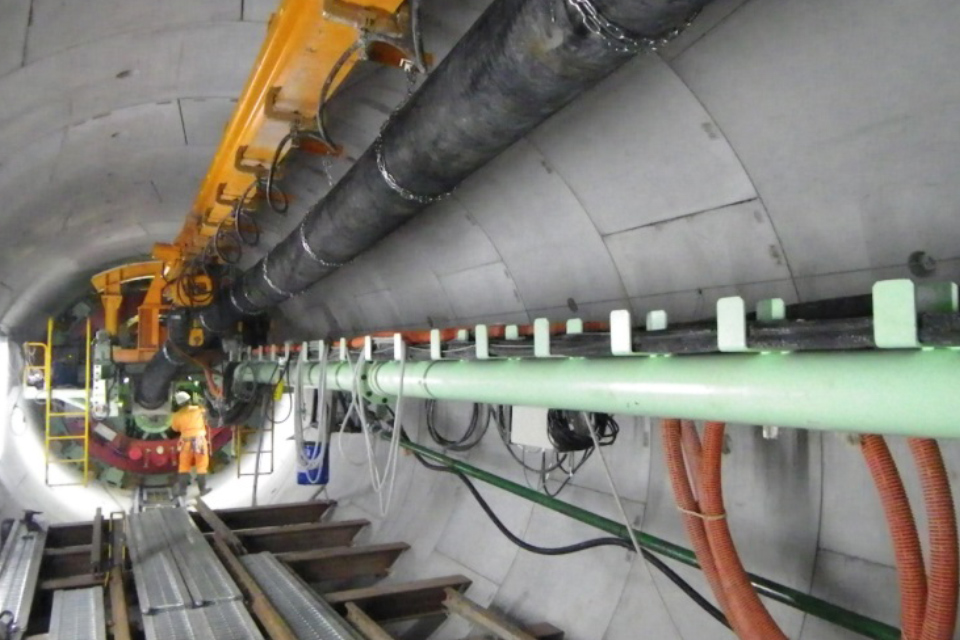
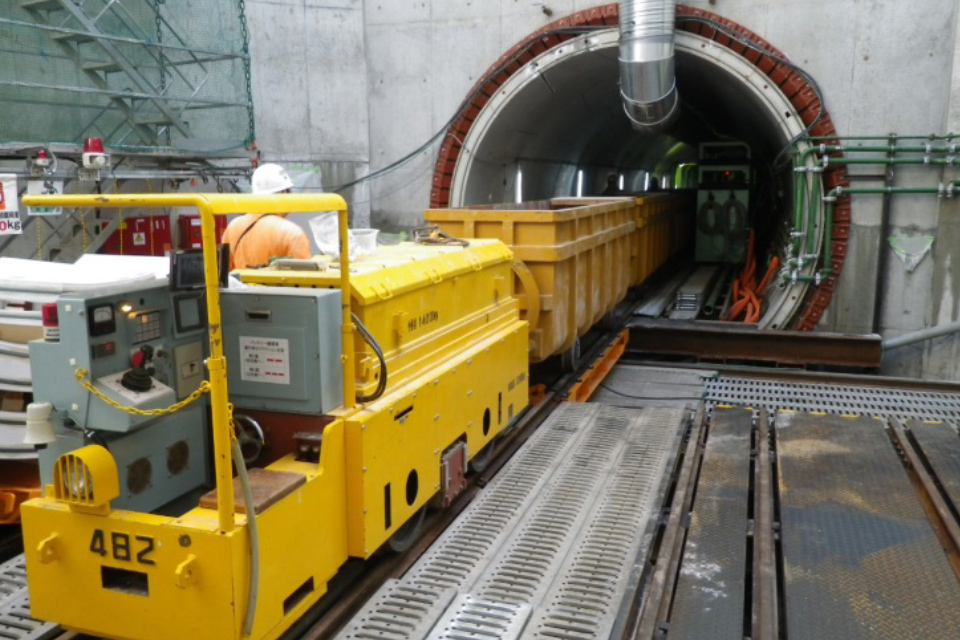
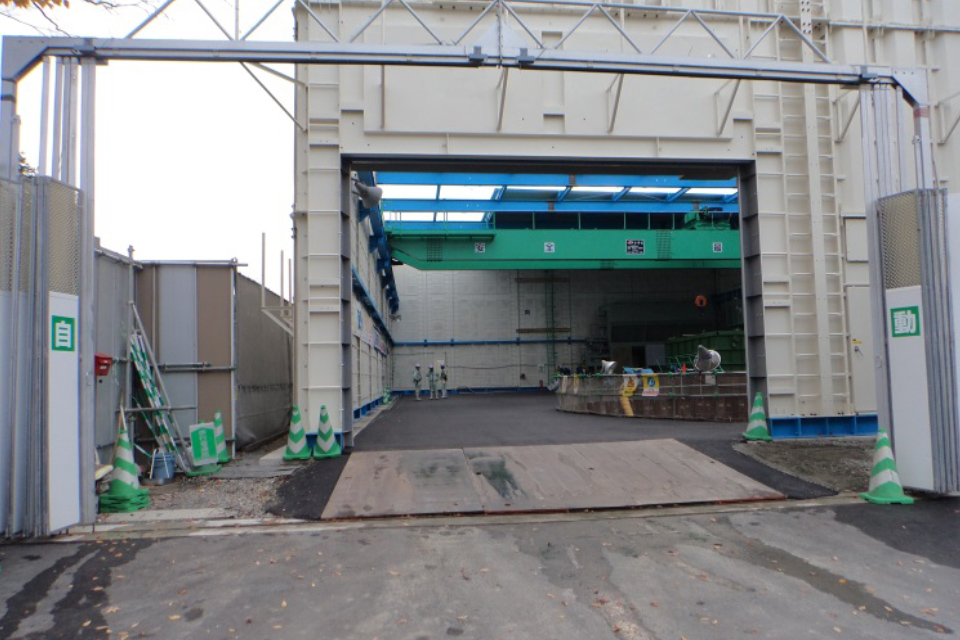
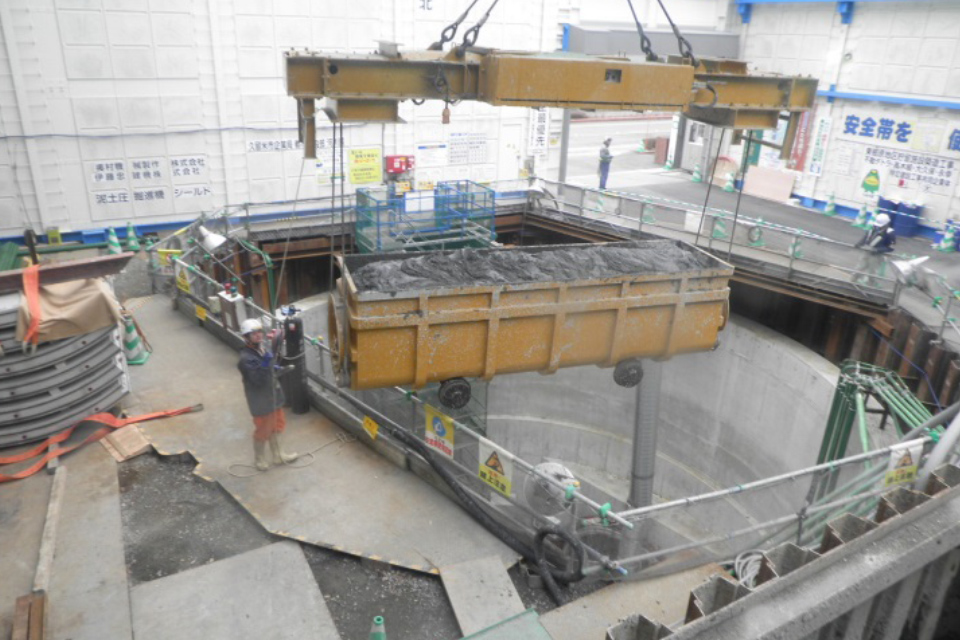
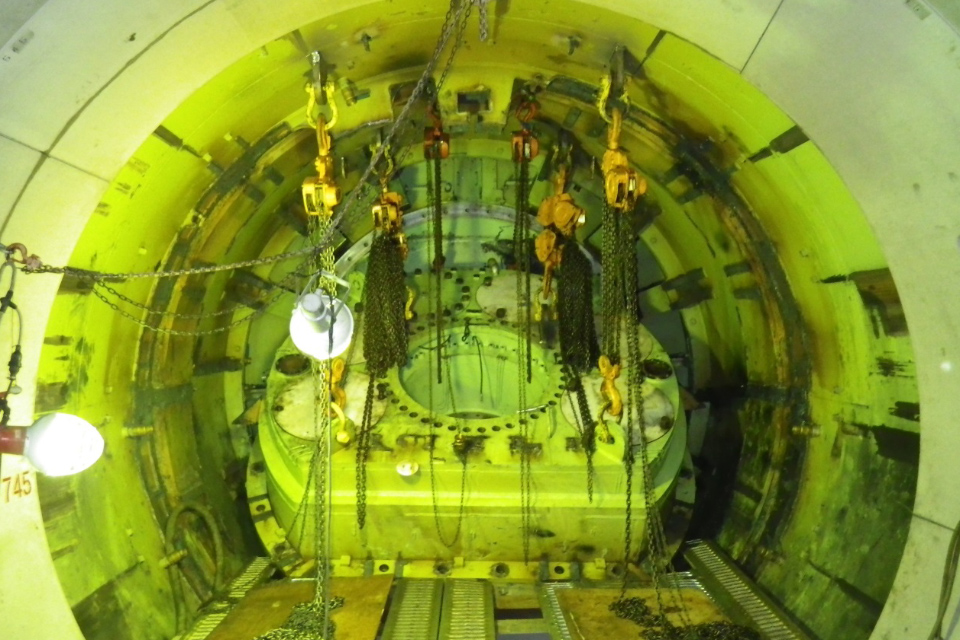
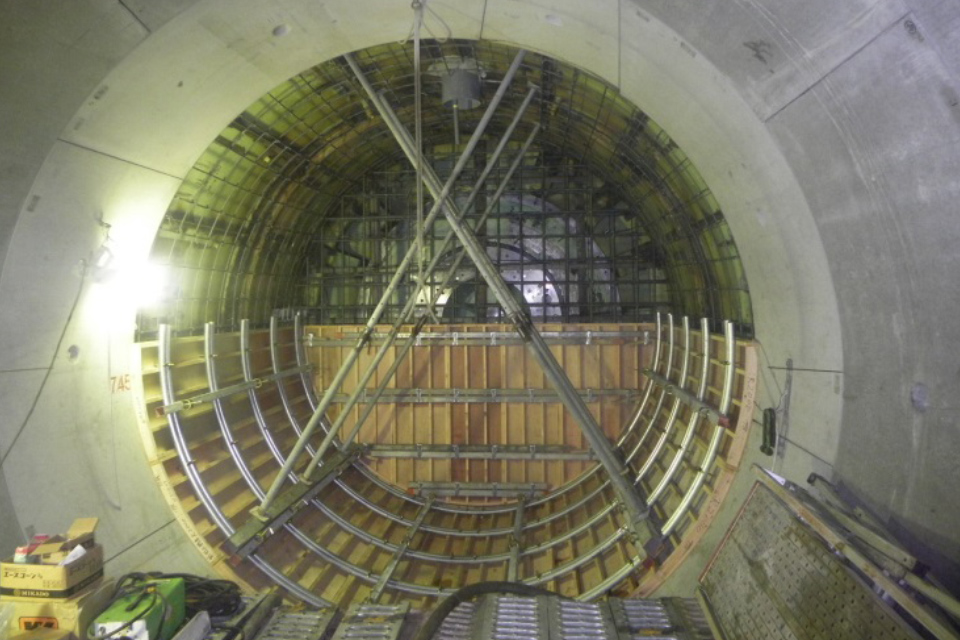
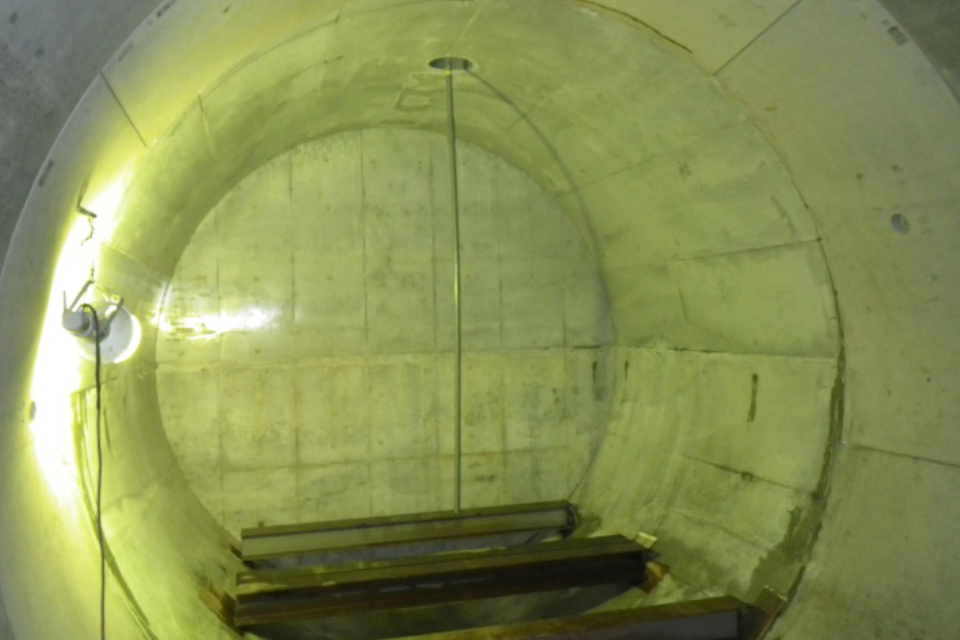
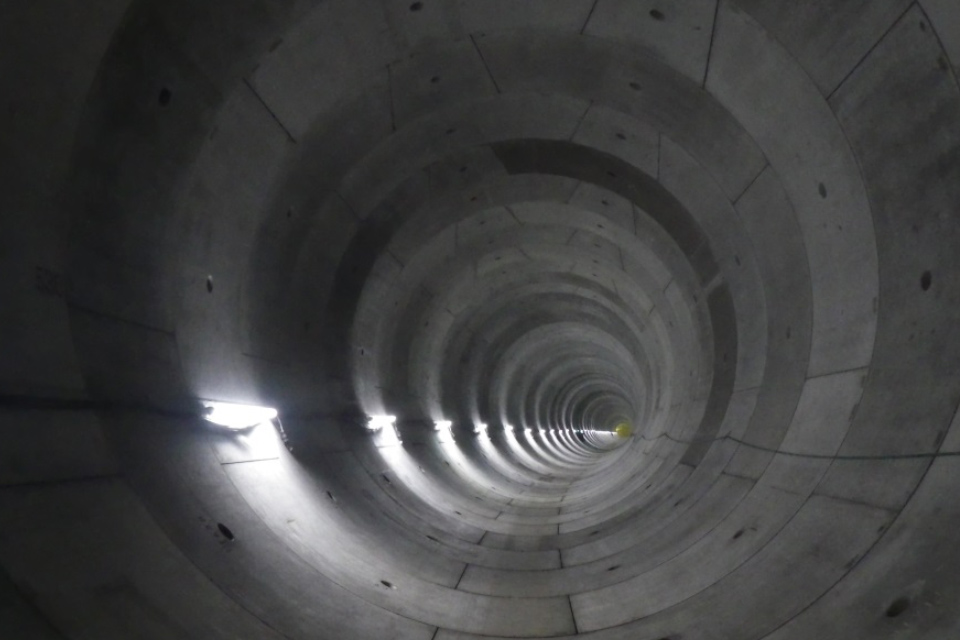
| Client: | Kurume City, Fukuoka Prefecture |
|---|---|
| Completed: | 2013 |
| Location: | Higashi Kushihara Cho, Kurume City. |
| Work Outline: |
Mud shield method; shield diameter 4,530mm, course length 901.1m Internal diameter after primary cladding 4.000mm, segment outer diameter 4,400mm, length 895.0m Shaft: pressurized caisson, inner diameter 12m, outer diameter 13.6m, depth 15.2m Ventilation work, paving, specialized manhole, temporary structures, site ancillary work |
Other Project Stories
Technologies & Solutions
READ MOREAchievements
READ MORE

